‘Geological time includes now.’
Looking up at the looming cracked dolmens, precariously balanced boulders, perching promontories and other formidable formations from the gulch I was tracing it wasn’t easy to shrug away Edward Abbey’s artful caution. That they had been like that for most part of millions of years is exactly what prompts – and tempts – you to walk among them and even try a hand at bouldering while there. Soloing myself up, no fancy highballing, I looked up again while in a hand jam. Cerulean skies parted for the sun to blaze through silhouetting the outcrop in a heavenly flash. Little black dots funneled their way into my vision. Help, if needed, was close at hand. Yet I thought of Aron Ralston. This time the words of the famously passionate and equally prickly ranger and author’s words struck closer home: watch out for falling rocks.
I had begun my trek early that morning with a friend at Virupapur Gaddi, popularly known as Hampi Island, across the Tungabhadra river and the erstwhile tourist hangout Hampi Bazaar. We were making for the Virupaksha temple that rose majestically above the dewy green of the paddy fields and palm trees, the petering river and languorous hammocks of the guest houses that dotted the bank. The remarkable rocks came in the way; Virupaksha, which was across the water anyway, had to wait. Trying for some handy beta from the hotel staff, I later queried casually what would have formed the magnificent if haphazard Lego block eminences which were now slowly swathing in the lustrous gold of the rising sun.
“Sir, it was like that only even from my childhood. So, I don’t know.” He replied genuinely distressed at being unable to help.
Enamoured and intrigued by what we saw that morning, we decided to spend the day scouting for the stupendous and the strange, the prettiest and the parlous rock formations that marked the landscape. Driving up a shale-strewn path that doubles as a waterway in the rainy season we reached a narrow road that connects the nearest rail head Hospet (30km) and the historic Anegundi not very far. Along the way to Anegundi there is the carcass of an aqueduct – or bridge, as some claimed – whose construction was abandoned following a collapse and loss of lives; the reason has been variously attributed to shortage of funds and paucity of labourers who baulk at the supposed supernatural warning to stay away sounded by the deaths.
Pindas and marbles. And some missing jewellery.
The warnings are not without reason, locals say. Or adequate faith. Hampi and Anegundi are believed to form parts of Kishkindha, the monkey kingdom, which forms the crux of many significant events in the holy Indian epic Ramayana. Brothers Ram and Lakshman reach Kishkindha looking for missing Sita. Here they meet Hanuman, who was only a monkey general at that time. Hanuman takes them to king Sugreeva who, realising the potent combo of sheer divinity and raw strength in the brothers, offers all help. He takes them to a cave with the floor littered with Sita’s ornaments – which he said fell off as she was abducted by the demon king Ravana who came swooping down on his flying chariot. In exchange for help from Hanuman, Ram kills Vali, Sugreeva’s warring brother and a thorn in his throne. Hanuman is immediately dispatched to Lanka to do a reconnoitre and comes back with news of spotting Sita. The monkey army of Kishkindha begins construction of a bridge to Lanka, there is a calamitous rain and war and all that which makes Ramayana the timeless classic it is. Kishkindha remains to this day in the many temples of Hampi and Anegundi with their monkey panels and splendidly decked and towering images of Hanuman. The jewels of Sita are still believed to be in a cave – now submerged – falling somewhere between the Tungabhadra and the masterpiece Vithala temple complex.
That Lord Ram has walked these parts make it holy for the Hindus. But what makes it even more so is the belief that the rounded boulders were originally pindas placed by Rama in the memory of his father, Dasaratha. Pindas are rice balls that form part of a sraddham or homage ceremony in accordance with Hindu tradition. While this is official for the smooth-edged rocks in the area surrounding the Malyavantha hill, the locals are only too happy to extend its scope. Well, why not! Karlu Karlu in the Australian outback holds immense cultural and spiritual significance to the earliest inhabitants, the Aboriginals, who believe all the rounded rocks are eggs laid by the sacred rainbow serpent. It came to be called ‘Devil’s Rocks’ after a possibly blinkered, definitely fatigued member of an overland expedition called it that.
Weathering and flooding. And some rock climbing.
Whether as a matter of earnest belief or a clever pre-empting of possible fundamentalist resistance to the region’s burgeoning popularity as a hippie hangout and bouldering destination, some old hands have wilfully clubbed the sport with the persona of Hanuman – strong, lithe and maybe a tad defiant. Well, among those who aren’t any of these (the boulderers themselves), there wouldn’t be many who wouldn’t believe themselves to be some of these. Whew! Please don’t make me say it again. While we can happily overlook any wily deliberations for the sake of bigger good and a fantastic sport, we do have to get our facts straight. Marbles and pindas are good when its pilgrimage on your mind but it’d be better as you heel hook your way up to know that these are just the tip of the proverbial iceberg: the exposed layer of a vastly more expansive underground granite formation that has been around for not millions, but billions of years.
Several billions of years ago, during an age noted by geologists are Archean, the magma beneath the earth’s crust cooled to form the granite. Pressure from all around over millions of years caused tectonic shifts which resulted in the granite breaking through the surface and making an appearance, continuous and un-cracked from what we see today. This also resulted in the cataclysmic rearrangement which broke up the one single continent of Gondwanaland into India and Africa. This was really a long time ago for we – in Delhi or Bangalore – have forgotten we are supposed to be nice to the Africans. What then followed was the millions of years of weathering by dint of exposure to sun, wind and rain. While a process called exfoliation rounds off the boulders in places, thermal stress weathering caused by repeated exposure to day and night causes it to crack, sometimes right down the middle. Rarely are they the handiwork of men as reported in some places. Vertical cracks when followed by horizontal ones renders the mountain into a bundle of rectangular blocks. Like the one I was attempting to climb now, gear less, barefoot.
 I clambered up on all fours along a steep that glinted and grew warmer under the sun, like Spiderman after a bout with The Lizard. Tolerably proud of my accomplishment and gasping for breath I crept into a gap between two gargantuan boulders leaning against each other to rest and reflect.
I clambered up on all fours along a steep that glinted and grew warmer under the sun, like Spiderman after a bout with The Lizard. Tolerably proud of my accomplishment and gasping for breath I crept into a gap between two gargantuan boulders leaning against each other to rest and reflect.
What’s now in geological time?
An edited version of the story came in the New Indian Express; though I don’t think much about the edit work.

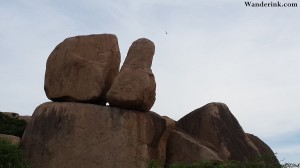
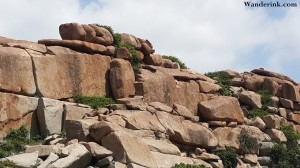

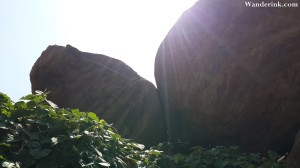
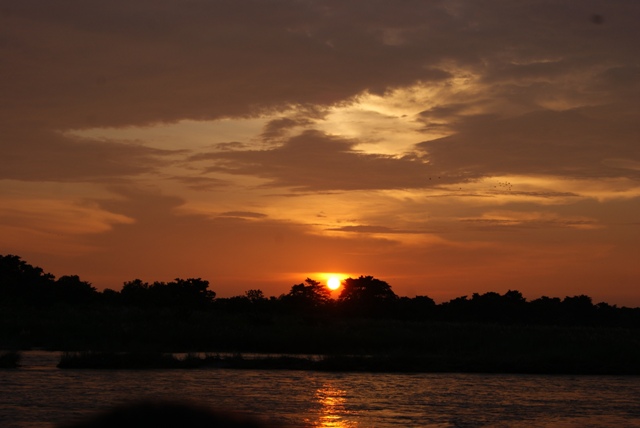

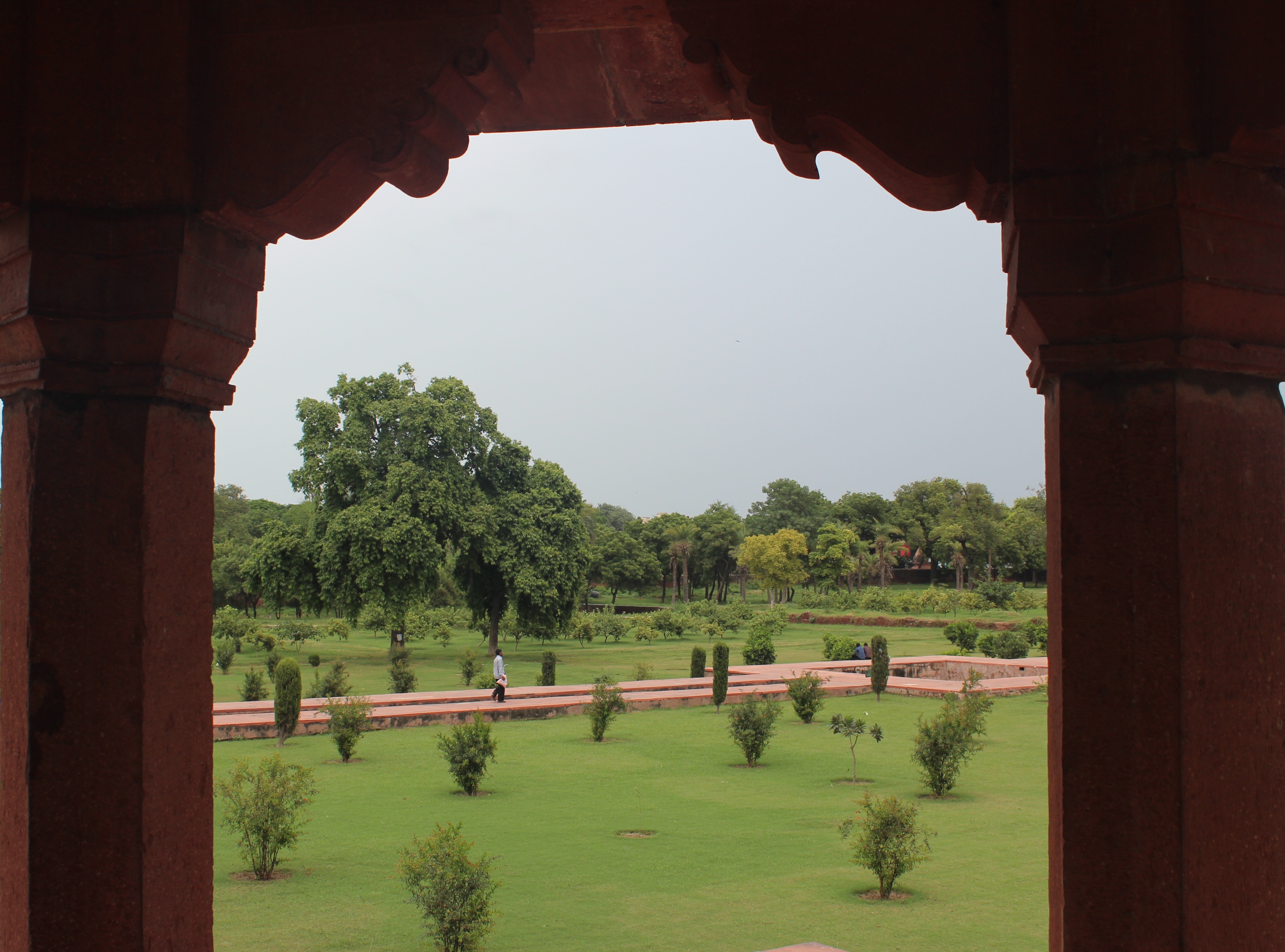

5 Comments
Dr.Many.M.S
Excellent writing! Linking the epic, history and geological science of the area is the beauty of the article.Tectonic origin and the earth’s processes like flood, earthquake, extinctions etc has played major roles in the evolution of new landforms as well as new culture in around the globe.Anyways, nice one.
Dr.Many.M.S.
Sr.Geologist
Oil & Natural Gas Corporation
Assam.
Admin
Thank you, Dr Many MS.
krishna
To the point and informative narration. Thank u
Admin
Welcome, Krishna.
Shraddha
Reading this felt like being present at Hampi, seeing the ruins and the rocks, while imagining how it must have been in the ancient days. Plus I added so many new words to my vocabulary, which I will remember hopefully